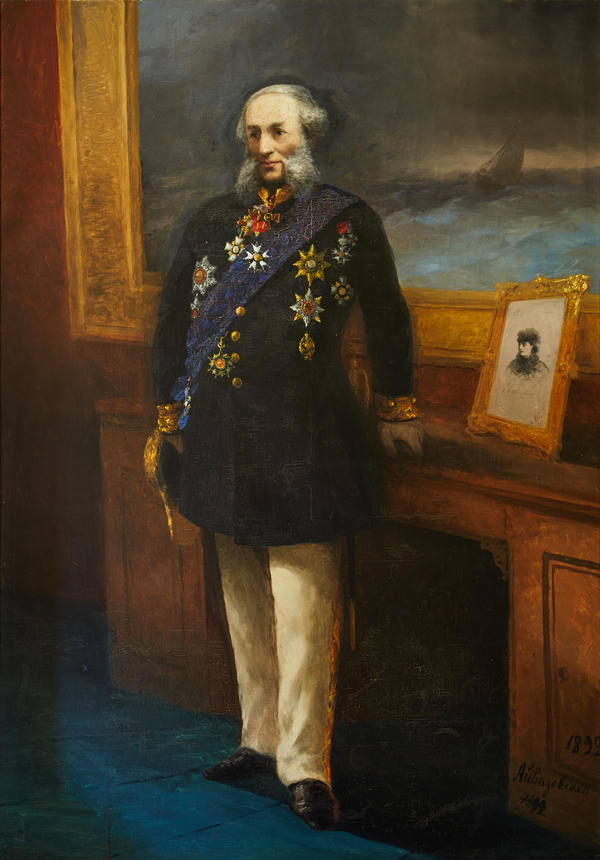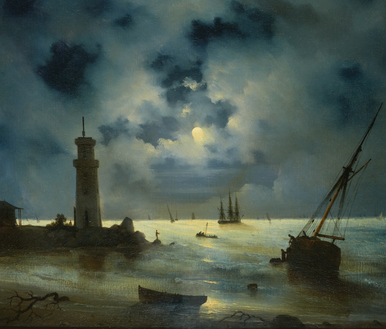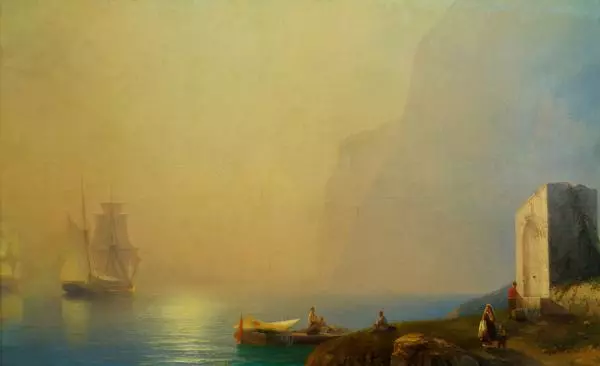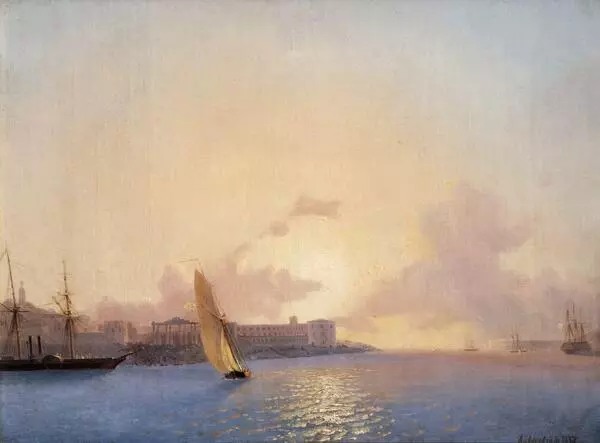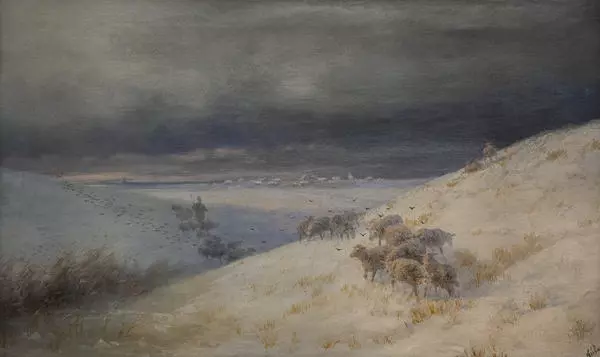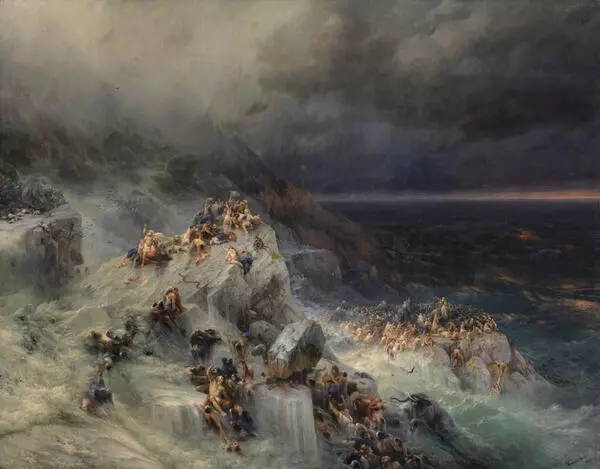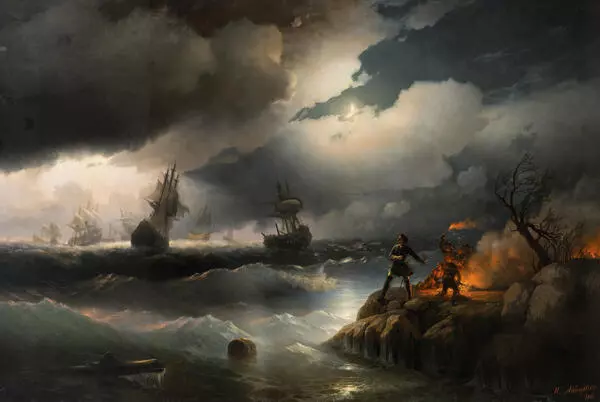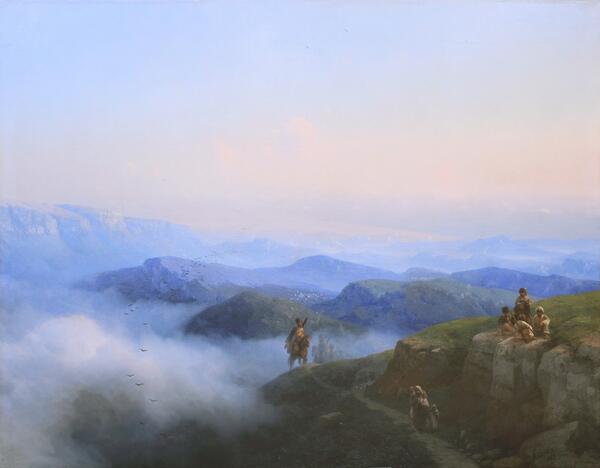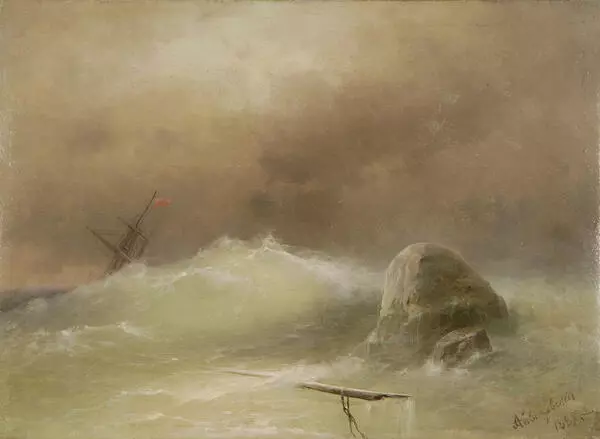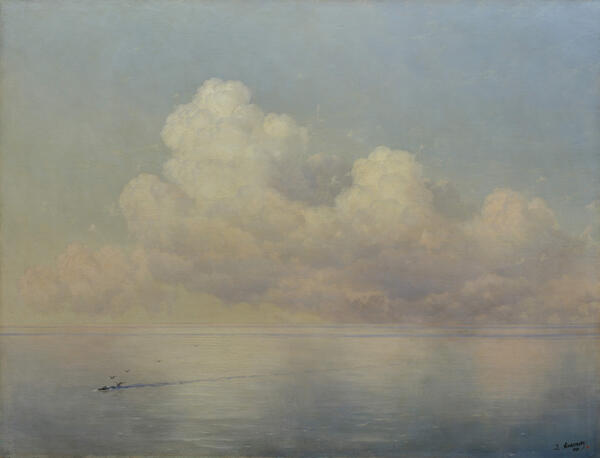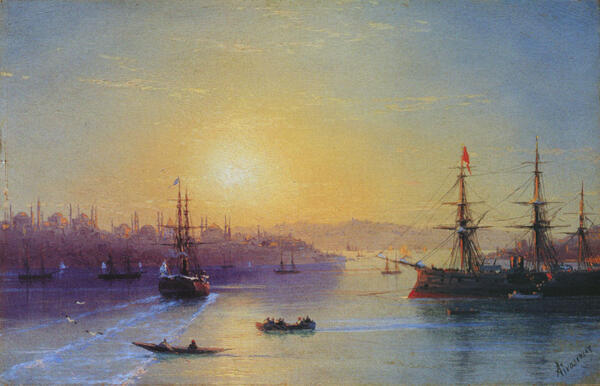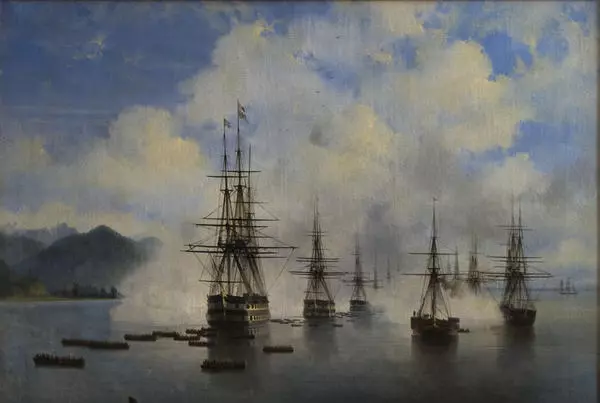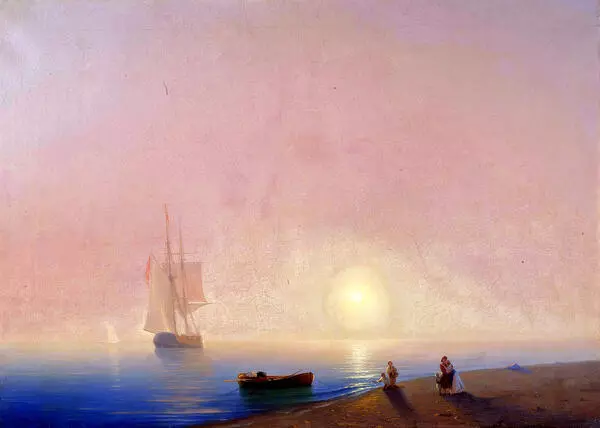Ivan Aivazovsky (1817—1900) at quite an advanced age painted two self-portraits — the first in 1892 and the second — six years after the first. These two well-known works are considered to be a match, they both have the same dimensions and similar composition. Both pictures were painted in order to perpetuate the artist’s connection with the Russian Navy.
At that point in time no one doubted Aivazovsky’s immense achievements in art. He was among the top prominent Russian artists and his best masterpieces were created at the time. The Black Sea (1881) and Among the Waves (1892) are among the artist’s best creations. Aivazovsky managed to combine his civic activities with art. Exhibitions of his works were held in Russia practically every year. In 1890 the painter opened his exhibition at the famous Paul Durand-Ruel gallery in Paris. It was noted in the papers, that “the exhibition of I.K. Aivazovsky”s paintings in Paris raised the significance of Russian art in the eyes of the French”.
Though the artist became famous, above all, for his sea-pieces, he also painted portraits. He usually depicted people close to him, never did more than one sitting and had a very quick eye, resulting in great accuracy. Aivazovsky’s portraits of Aleksandr Pushkin, whose image in his art was closely connected with the Crimean nature, are of particular interest. Pushkin at the foot of Gurzuf cliffs, A.S. Pushkin on the top of Ai-Petri mountain — are among the artist’s collection of famous portraits. By the end of his life the great artist created quite a few portraits.
In the self-portrait of 1892 Aivazovsky looks very dignified. He is wearing an Admiralty parade tunic, a variety of Russian and foreign decorations and orders pinned to his chest. A blue distinction ribbon is placed across the right shoulder — it is an attribute of the White Eagle Order. His success, both as a civil servant and an artist, made him an award winner. The highest civic award was bestowed on him — in his elderly age he became an Actual Privy councilor. As to whether the artist accurately depicted himself or not, one can judge by the words of young sharp-tongued Anton Pavlovich Chekhov. Having visited Aivazovsky in Feodosia, Chekhov wrote, “Aivazovsky is a brisk and vivacious old man of 75, a cross between a good-natured Armenian and fussy pontiff; full of himself, his hands are soft, his handshake — that of a General”.
At that point in time no one doubted Aivazovsky’s immense achievements in art. He was among the top prominent Russian artists and his best masterpieces were created at the time. The Black Sea (1881) and Among the Waves (1892) are among the artist’s best creations. Aivazovsky managed to combine his civic activities with art. Exhibitions of his works were held in Russia practically every year. In 1890 the painter opened his exhibition at the famous Paul Durand-Ruel gallery in Paris. It was noted in the papers, that “the exhibition of I.K. Aivazovsky”s paintings in Paris raised the significance of Russian art in the eyes of the French”.
Though the artist became famous, above all, for his sea-pieces, he also painted portraits. He usually depicted people close to him, never did more than one sitting and had a very quick eye, resulting in great accuracy. Aivazovsky’s portraits of Aleksandr Pushkin, whose image in his art was closely connected with the Crimean nature, are of particular interest. Pushkin at the foot of Gurzuf cliffs, A.S. Pushkin on the top of Ai-Petri mountain — are among the artist’s collection of famous portraits. By the end of his life the great artist created quite a few portraits.
In the self-portrait of 1892 Aivazovsky looks very dignified. He is wearing an Admiralty parade tunic, a variety of Russian and foreign decorations and orders pinned to his chest. A blue distinction ribbon is placed across the right shoulder — it is an attribute of the White Eagle Order. His success, both as a civil servant and an artist, made him an award winner. The highest civic award was bestowed on him — in his elderly age he became an Actual Privy councilor. As to whether the artist accurately depicted himself or not, one can judge by the words of young sharp-tongued Anton Pavlovich Chekhov. Having visited Aivazovsky in Feodosia, Chekhov wrote, “Aivazovsky is a brisk and vivacious old man of 75, a cross between a good-natured Armenian and fussy pontiff; full of himself, his hands are soft, his handshake — that of a General”.

